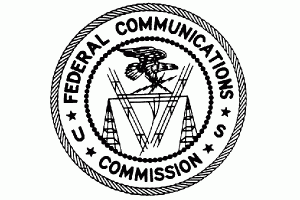 Stories of bad behavior by airline passengers regularly make the news, but the most common kind of passenger misconduct doesn’t get widely reported (unless, perhaps, it’s perpetrated by a celebrity). Directives to turn off electronic devices or to cease in-flight cell phone use are easily the biggest causes of confrontations between flight crews and airline customers today, with many passengers questioning the need for such rules.
Stories of bad behavior by airline passengers regularly make the news, but the most common kind of passenger misconduct doesn’t get widely reported (unless, perhaps, it’s perpetrated by a celebrity). Directives to turn off electronic devices or to cease in-flight cell phone use are easily the biggest causes of confrontations between flight crews and airline customers today, with many passengers questioning the need for such rules.
That probably comes as no surprise, given the pervasiveness of electronic technology for personal and business telecommunications, consumption of media and data and entertainment. Mobile connectivity is so taken for granted that when many of us balk when we’re faced with the prospect of being cut off from our gadgets for hours.
According to a recent Wall Street Journal article, American Airlines flight attendants alone reported more than 1,300 passenger incidents in 2011, an increase from 2010. The vast majority of passenger disputes at American these days, as at every other air carrier, revolve around fliers’ insistence on using electronic technology when it’s forbidden.
The Federal Aviation Administration’s requirements to power down electronic devices during takeoff and landing are especially galling to those who believe that they pose no real danger to safe operation of the aircraft. In fact, the FAA now lets pilots keep iPads loaded with aviation charts and manuals in the cockpit, and allows them to be powered up and in use during all phases of a flight. One guest columnist for Time pointed out that exceptions to the electronic device ban are also made for journalists flying aboard Air Force One, implying that such an exemption would never be allowed if the government truly felt that electronic devices posed a threat.
Proponents of the ban rightly assert that the FAA and other agencies cannot possibly test every conceivable device that dozens or hundreds of passengers might bring aboard commercial flights to determine whether they might interfere with the many different electronic systems that are part of modern aircraft.
The latest round of attacks on and defense of the FAA’s rules governing electronic devices was touched off by a widely reported incident last December involving Alec Baldwin. The actor was removed from an American Airlines flight from Los Angeles to New York after he reportedly refused to stop playing the game “Words With Friends” on his iPhone. In order to keep such disputes from occurring while planes are airborne, airline rules and federal regulations permit flight crews to return to the gate and kick offending passengers off the aircraft.
Whether there’s a celebrity angle or not, most such incidents don’t escalate to the point of booting a passenger or getting law enforcement involved. Those steps are usually only taken when a passenger responds to flight attendants’ directives with aggressive or offensive behavior, as Baldwin allegedly did.
For every passenger actually caught using an electronic device, of course, there’s probably one or more of them surreptitiously using a smartphone, iPod or e-reader. Many more passengers likely are carrying devices that remain turned on throughout the flight, intentionally or otherwise, even if they don’t use them.
So does this present a danger? Common sense would say no, or else there would be a lot more commercial plane crashes. Research studies on the topic have come to varying conclusions. Following the crash of a Swiss commuter flight just after takeoff that killed ten people in early 2000, investigators decided to audit mobile phone records of the passengers. There appeared to be a correlation between two passengers’ texting and phone call activity and a malfunction of the aircraft’s autopilot system. Although the evidence was far from definitive, many countries instituted airplane cell phone bans as a result, some of which have been lifted in the decade since the Swiss disaster.
In the United States, the FAA seems to prefer to err on the side of caution. Consumer electronic devices are essentially assumed to have the possibility of interfering with aircraft electronics unless airlines can demonstrate otherwise. The stakes are so high – the chance that hundreds of people dying in a what would be a preventable and highly publicized incident – that the FAA doesn’t want to allow even a tiny risk.
Telanalysis knows that your organization relies on telecommunications technology to keep employees connected with each other and with your clients. But connectedness comes at a price, and the experts at Telanalysis can help you keep costs down with comprehensive telecom audits and telecom cost control measures. Call Telanalysis today at 866-300-6999 to find out more about our telecom management services and to arrange for a free consultation.
 When it comes to grooming a small business to become the next multinational corporation, every penny counts. Business owners not only look for cost-effective ways to run their business, but also to track recurring expenses and project costs into the future to ensure finances remain in the black. In this age of technology, many free applications have sprung up claiming to offer the best money saving methods with the best visualizations of savings. But which app is really the best? The answer is: it depends on your business’ needs. Whether your company needs a way to track individual employee’s expense reports or to provide a picture of your corporate finances, there’s an app for that. Continue reading
When it comes to grooming a small business to become the next multinational corporation, every penny counts. Business owners not only look for cost-effective ways to run their business, but also to track recurring expenses and project costs into the future to ensure finances remain in the black. In this age of technology, many free applications have sprung up claiming to offer the best money saving methods with the best visualizations of savings. But which app is really the best? The answer is: it depends on your business’ needs. Whether your company needs a way to track individual employee’s expense reports or to provide a picture of your corporate finances, there’s an app for that. Continue reading 





 Phone bill management is no easy task. Many businesses attempt to take telecom auditing roles upon themselves before quickly realizing the onslaught of electronic and paper bills combined with varying plans, mystery charges and different departments with different needs create an impossible situation to sort out alone. Many companies, such as Telanalysis, offer phone bill audits to track your small business’ charges and eliminate wireless waste. While professional telecom management is the easiest (and most accurate) option for most companies, there is still one big thing consumers and businesses can do to reduce phone bill charges and prevent overbilling:
Phone bill management is no easy task. Many businesses attempt to take telecom auditing roles upon themselves before quickly realizing the onslaught of electronic and paper bills combined with varying plans, mystery charges and different departments with different needs create an impossible situation to sort out alone. Many companies, such as Telanalysis, offer phone bill audits to track your small business’ charges and eliminate wireless waste. While professional telecom management is the easiest (and most accurate) option for most companies, there is still one big thing consumers and businesses can do to reduce phone bill charges and prevent overbilling:  We’ve all been there before – receiving a telecom bill that is much more than expected due to an unfortunate late fee. Whether from forgetfulness or financial circumstances, not paying a bill on time carries with it many consequences. That is why Telanalysis is here to help inform everyone about the ins and outs of telecom late fees and how to prevent them from occurring again in the future.
We’ve all been there before – receiving a telecom bill that is much more than expected due to an unfortunate late fee. Whether from forgetfulness or financial circumstances, not paying a bill on time carries with it many consequences. That is why Telanalysis is here to help inform everyone about the ins and outs of telecom late fees and how to prevent them from occurring again in the future.  In today’s hectic business world, many companies are choosing to go wireless. Cutting the cord to landlines and strapped monitors is proving to be beneficial for several reasons, including convenience, ease of access, immediate communication, and more. However, it is vital to ensure that a company is paired with the right wireless plan and provider. That is where Telanalysis can help.
In today’s hectic business world, many companies are choosing to go wireless. Cutting the cord to landlines and strapped monitors is proving to be beneficial for several reasons, including convenience, ease of access, immediate communication, and more. However, it is vital to ensure that a company is paired with the right wireless plan and provider. That is where Telanalysis can help.  The amount of data consumed over mobile networks worldwide more than doubled every year for each of the last four years, according to a February report from the IT and telecom consulting company Cisco. Several other studies and forecasts of mobile data usage indicate that this phenomenal rate of growth shows no signs of slowing down any time this decade.
The amount of data consumed over mobile networks worldwide more than doubled every year for each of the last four years, according to a February report from the IT and telecom consulting company Cisco. Several other studies and forecasts of mobile data usage indicate that this phenomenal rate of growth shows no signs of slowing down any time this decade. Stories of bad behavior by airline passengers regularly make the news, but the most common kind of passenger misconduct doesn’t get widely reported (unless, perhaps, it’s perpetrated by a celebrity). Directives to turn off electronic devices or to cease in-flight cell phone use are easily the biggest causes of confrontations between flight crews and airline customers today, with many passengers questioning the need for such rules.
Stories of bad behavior by airline passengers regularly make the news, but the most common kind of passenger misconduct doesn’t get widely reported (unless, perhaps, it’s perpetrated by a celebrity). Directives to turn off electronic devices or to cease in-flight cell phone use are easily the biggest causes of confrontations between flight crews and airline customers today, with many passengers questioning the need for such rules. It’s likely that your company or organization already has a policy that discourages cell phone usage by employees while they’re driving during work hours. If the National Transportation Safety Board were to get its way, such corporate cell phone policies might become just the second line of defense against unsafe practices such as talking while driving and texting while driving.
It’s likely that your company or organization already has a policy that discourages cell phone usage by employees while they’re driving during work hours. If the National Transportation Safety Board were to get its way, such corporate cell phone policies might become just the second line of defense against unsafe practices such as talking while driving and texting while driving. It won’t show up on a phone bill audit, but a slice of the money that you and your organization budget for telecom expenses could very well be going to subsidize other people’s free teleconferences, “adult chat” conversations or other phone-based services.
It won’t show up on a phone bill audit, but a slice of the money that you and your organization budget for telecom expenses could very well be going to subsidize other people’s free teleconferences, “adult chat” conversations or other phone-based services. The way in which the Federal Communications Commission pursues its mission of ensuring that residents of every part of the United States have access to telecommunications services at reasonable prices is being re-evaluated to give greater importance to newer technologies. The method of funding “universal service” is also very likely to change, perhaps lowering the amount that the average telecom consumer pays in the form of costs passed through to them by telecom carriers.
The way in which the Federal Communications Commission pursues its mission of ensuring that residents of every part of the United States have access to telecommunications services at reasonable prices is being re-evaluated to give greater importance to newer technologies. The method of funding “universal service” is also very likely to change, perhaps lowering the amount that the average telecom consumer pays in the form of costs passed through to them by telecom carriers.